Have you seen the Ukraine “symbol” floating around a lot recently and thought it looked weird?
Wondered what it meant?
Remember the phrase “symbolism will be their downfall”?
Ok good, then it’s not just me.
I’ve been wondering a lot and then I saw these posts…
Let’s start here:
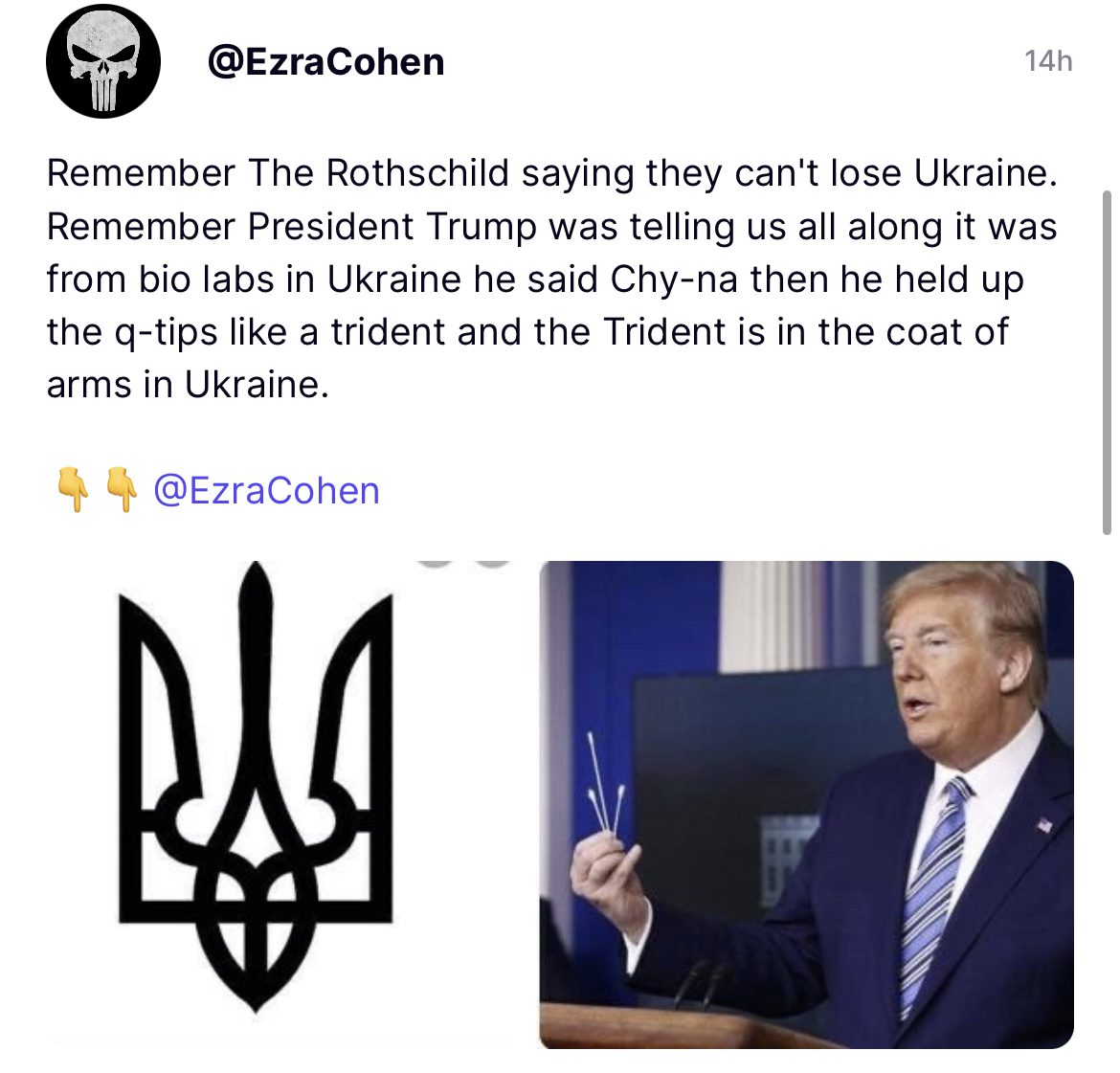
Very interesting…
You don’t think it’s an accident that UKRAINE of all places is suddenly thrust onto center stage of the world play, do you?
And then there was this?
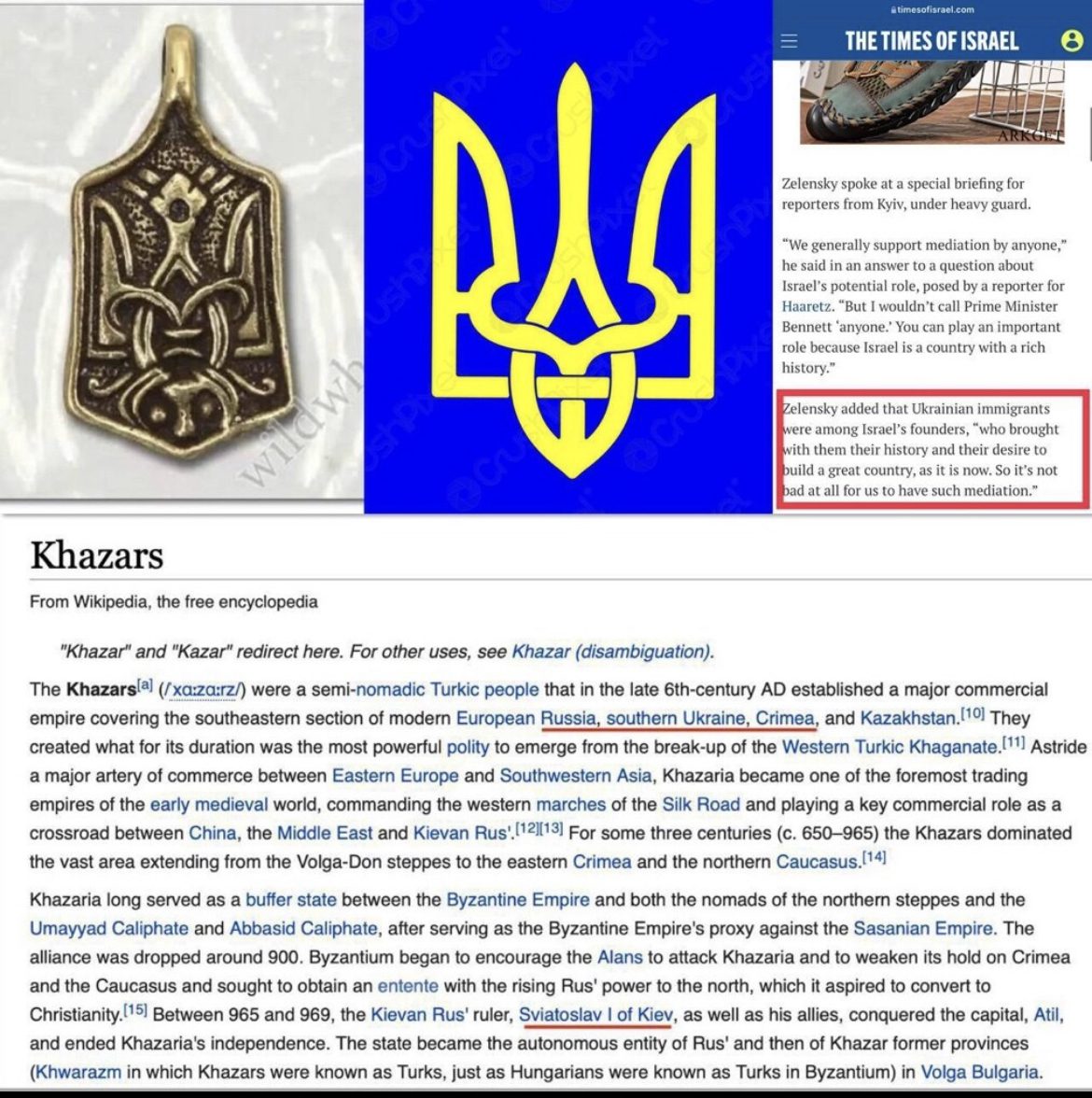
If you don’t know who the Khazars are, then you have to read my most recent article exposing the full story.
The Khazars are also known as the “Name Stealers” and they have been all but wiped out of every history book.
That is, unless you dig a little deeper.
If you DYOR (Do Your Own Research) you’ll find it.
I did.
And I put it all together in one master article.
Read here:
EXPLAINED: What Is REALLY Happening In Russia/UKRAINE [MSM Not Telling You The Truth]
So this is officially the "Coat of Arms" of Ukraine, huh?
Don't you find that a bit interesting?
From Wikipedia:
And from Google Images, it is labeled as the image of the Khazars:
I'm not making this stuff up folks!
And when you Google Search "khazar symbol" here is your FIRST image:
Here's more, from TopWar:
State emblem - a distinctive sign transmitted by inheritance, one of the symbols of statehood, reflecting historical and the philosophical essence of any state.
According to the Constitution of Ukraine, “The Great State Emblem of Ukraine is established taking into account the small State Emblem of Ukraine and the Emblem of the Zaporozhian Army ... The main element of the large State Emblem of Ukraine is the Sign of the Prince Vladimir Great State (the small State Emblem of Ukraine)”.
Let me tell you a little secret: Ukraine today does not have a state emblem, there is only a small emblem - a trident on a blue golden shield. At the same time, it is pathetically indicated that this is the “Sign of the Princely State of Vladimir the Great.” The authors of this statement refer to the sign of the state, which, and with that name, never existed. Also, there is still no large emblem, there is only a bill on this emblem, which has not been considered by the Parliament of Ukraine.
So, the main symbol of the state so far is the trident, whose history is shrouded in fog. No one knows exactly where it came from and what this symbol means. There are more than thirty Ukrainian versions of its origin. This is completely abnormal, the symbol of the state is a sign whose meaning is not known to anyone, even those who accepted it.
Myths about the origin of Ukraine and the Ukrainians. Myth 5. Brand instead of coat of arms
There are several versions of its origin. One by one, Prince Vladimir seemed to use it as a personal heraldic sign on seals and coins. The trident at the same time was solely his personal symbol, which had nothing in common with the generic heraldic signs of Rurikovich. In addition to the trident, various Old Russian princes also used the now-forgotten "bicar" and a lot of other sovereign symbols, resembling stamps for cattle. Trident has also never been a state emblem of Russia.
Rather, it is just a distinctive princely symbol, the personal symbol of the prince, to whom he has tagged everything that belonged to him, from his coins to cattle, bricks and slaves. That is, it was a purely economic sign of ownership that had no relation to heraldry. That is why each prince had his own personal trident or biden.
Regarding what exactly this sign depicts, there are many assumptions: banner, anchor, chandelier, ax, dive falcon (as on the emblem of the ancient Russian city of Ladoga). What they tried to discern in the princely brand! We do not know what the Rurik thinkers thought about, branding their cattle. But they certainly and in a nightmare did not assume that this brand could become a symbol of the Ukrainian state through the centuries.
What is interesting, this symbol in different versions was used only by the closest successors of Prince Vladimir: Svyatopolk Damned and Yaroslav the Wise. Subsequently, Rurikovich and Russian tsars never used a trident as the coat of arms of Russia.
In this regard, it is amusing to observe the Ukrainian “state-makers” who rooted the trident with romantic legends, even read the word “will” in it and worship it with reverence as an ancient symbol of Ukrainian statehood.
The trident also sends us to the myth of Neptune, the ancient god of the sea, whose dark energy is aimed at destruction. As an attribute of Neptune, this dangerous and cruel god, the trident symbolizes the element not subject to man.
Since Christian times, the trident is often referred to as one of the symbols of the spiritual power of the prince of darkness. Satan is often depicted with a trident in his hand. Yes, and the notorious devils portrayed with a pitchfork, and it is triple.
According to another version, the princely trident really looks like the tops of the scepter of the emperors of Byzantium. And by the presence of the Christian cross on the trident of Prince Yaroslav the Wise, we can assume its connection with the Byzantine emperors.
What was the top of the scepter of the Byzantine emperors? Only general contours are visible on the seals. If we take into account that the eagle was the symbol of the ruling dynasty of the Palaeologus and the state symbol of the Byzantine Empire, then it was he who should be seated on the imperial scepter.
That is, the top of the scepter, then copied by the Russian princes, was a simplified depiction of a two-headed eagle, a symbol of the Christian unity of East and West. Thus, we can assume that, ironically, the small emblem of Ukraine is a stylized imperial eagle, which has now flown over to the emblem of Russia.
According to the most convincing third version, confirmed by the facts, the earliest image of a trident appeared on the coins of Prince Vladimir of Kiev at the end of the X century. In 985, Prince Vladimir seized Khazaria, and the Khazar state ceased to exist.
Due to the fact that until the X century, coins in Russia were not minted, Vladimir’s first coins were an imitation of the Khazar tamga, which was trading at the merchant market at that time, all the more so because this emphasized the victory over the kaganate. As can be seen from the figures, the image of the trident on the coins is a direct tracing from the Khazar tamga, which was in wide use in the Khazar Kaganate.
As Christianity strengthened, the victory over Khazaria became history, and tamgha-shaped signs disappear from use on the coins of Russia. On the obverse side of the next coin, the prince sitting on the throne was depicted, and on the reverse side Jesus Christ was depicted, as on Byzantine solids. That is, the appearance of the image of the trident-tamga was temporary.
Therefore, to use the image of the tamga of the Khazar Khaganate, who has died in the darkness of the ages, as well as the state coat of arms of Ukraine, with an unknown meaning, is not only a manifestation of low historical literacy, but a sign of the lack of historical events and traditions in the state material for the coat of arms.
Now about what is not, - about a large emblem, the draft of which has not been adopted by the Parliament of Ukraine. It is made in the "heraldic" style of African states that have recently gained independence, and most of all resembles the logo of a commercial company than the national emblem. This is a complete departure from the elementary aesthetic norms, the lack of taste, style and sense of proportion with simultaneous aggressive debacle and primitivization of everything and everyone.
First of all, symbolic and semantic incompatibility of details is striking. Everything that someone thought was purely Ukrainian was simply pushed into it. And this is not by chance.
European heraldry is directly related to the aristocratic past, chivalry, nobility, and is limited by clear symbolic and semantic rules, when each detail carries its precise meaning and is in its specific place.
Countries that are deprived of a noble, aristocratic past have no need to observe the laws of heraldry. They simply place symbols of the daily life of their people on their arms. Though Kalashnikov assault rifle. There is a completely different, non-European logic. That is why the project of the large coat of arms of Ukraine is purely “popular”, resembling a souvenir tray with lubochnye knickknacks.
The draft of the coat of arms depicts a lion, symbolizing the Galician-Volyn principality, and a Cossack Zaporozhye army, which seemed to personify the unity of Western and Eastern Ukraine. What is the unity between the wild beast and the muzhik with a gun? This is obvious - the desire for mutual destruction. It is unlikely that relations between the whole of Ukraine and Galicia can be shown more precisely on a symbolic level.
In addition, the lion on the coat of arms project is a slightly modified lion from the emblem of Lviv and the SS Galichina SS 14 division. On the head of the SS young one they simply put on the golden crown of the kingdom of Galicia, which was once part of the Austro-Hungarian Empire. It turned out a wonderful symbol of Western Ukraine - the SS lion with the Austrian crown on his head.

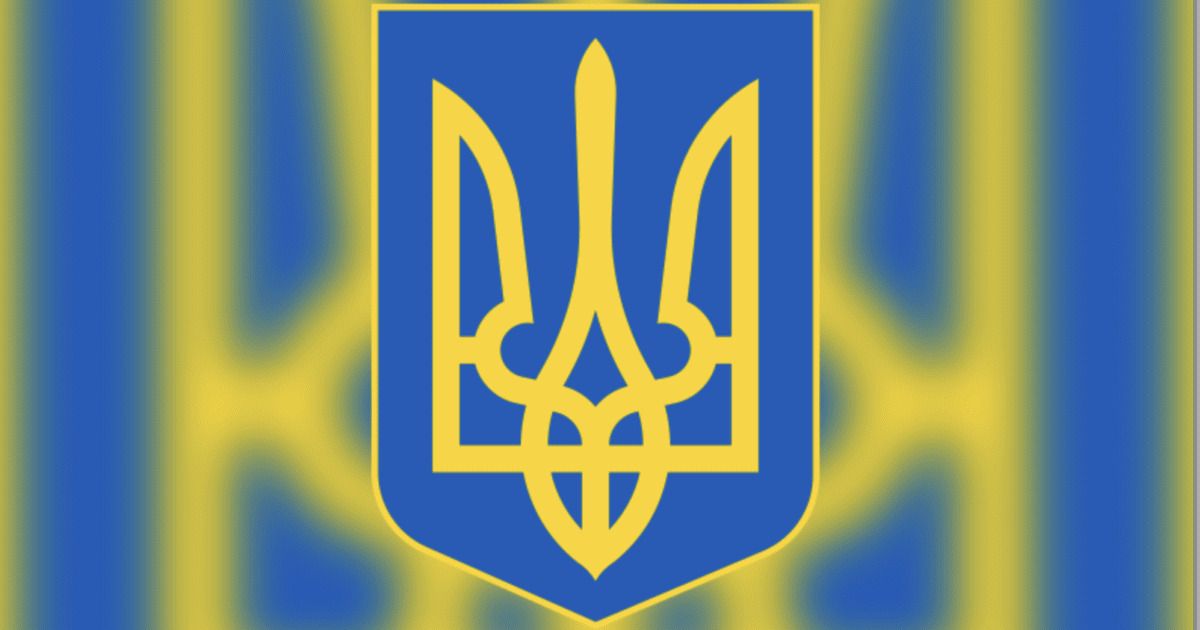
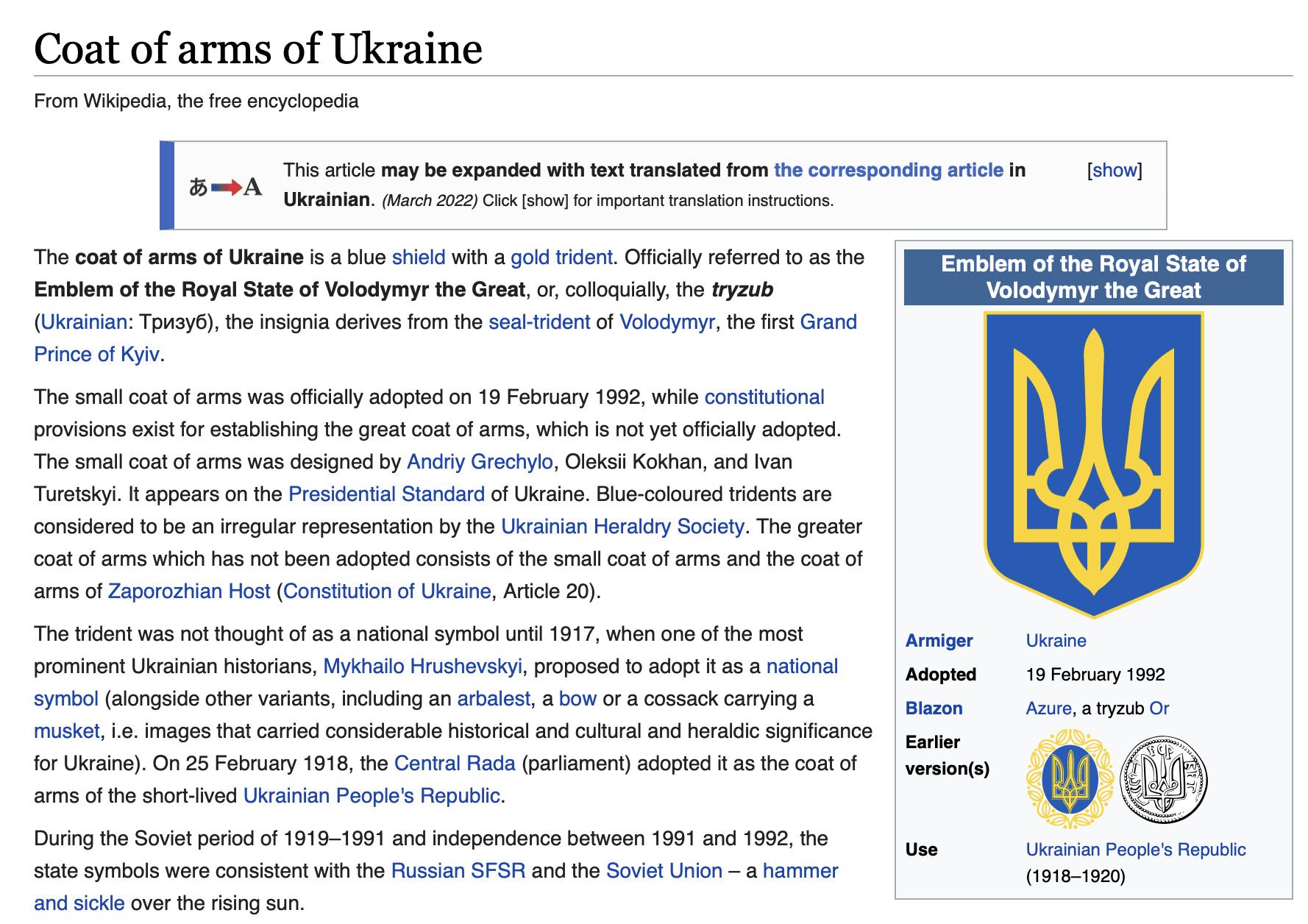
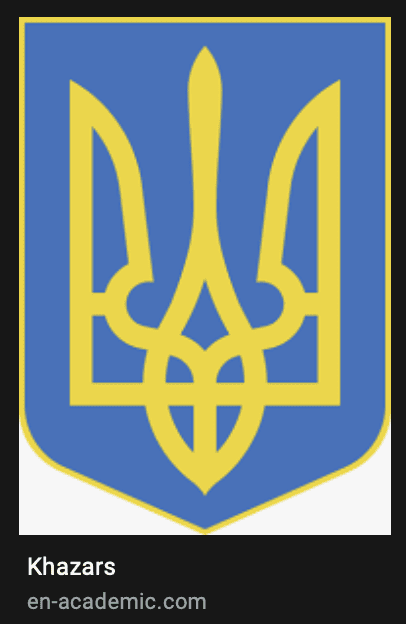


Join the conversation!
Please share your thoughts about this article below. We value your opinions, and would love to see you add to the discussion!